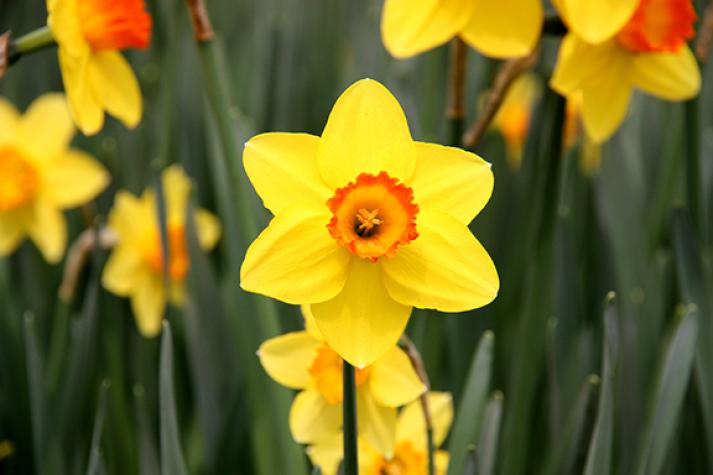COLUMBIA, Mo. – Springtime favorites such as daffodils, tulips and hyacinths won’t greet you next year if they’re not planted in the fall.
“The bulbs of spring-blooming plants need to be in the ground now so they can go through a chilling process in the winter,” said David Trinklein, state horticulture specialist for University of Missouri Extension.
By planting in the fall, you make sure that the bulbs are exposed to 10 to 14 weeks of low temperatures needed for spring flowering, Trinklein said. The bulb will develop a root system in the fall, but it takes the cold of winter to cause a flower bud to develop and emerge next spring.
So, you shouldn’t wait. When selecting, pick bulbs that are nice and fat and plump, Trinklein said. Avoid bulbs that are shriveled because they’re likely to be diseased.
But choosing flowering bulbs to grow in Missouri can get a bit tricky. Trinklein says daffodils are the best choice for the Show-Me State because they handle Missouri’s warmer weather and keep blooming year after year.
Tulips, on the other hand, are not completely comfortable with Missouri temperatures and will likely need to be replanted every couple of years.
“The worst, with regards to adapting to Missouri temperatures, are the hyacinths,” Trinklein said. “The first year you will get a full flower stalk packed with vibrantly colored florets, but after that they go downhill.”
Once you bring bulbs home, you need to get the soil ready before planting. Trinklein said you need to make sure the soil drains well. Bulbs sitting in damp soil over the winter will rot.
“To judge soil drainage, dig a hole about 12 inches deep, fill it up with water and let it drain. Then refill it with water and measure the depth of the water. Measure the depth again after 15 minutes and multiply the amount drained by four. This will determine drainage rate per hour. Soil that drains less than 1 inch per hour has poor drainage and is not ready for bulbs,” Trinklein said. “You can improve drainage by amending it with compost, peat moss or other well-decomposed organic material.”
While you’re amending the soil, it’s a great time to add fertilizer. Bone meal is an excellent choice, Trinklein said. It’s relatively high in phosphorus, which helps the bulb develop a good root system. And it’s relatively low in nitrogen, so it won’t burn the roots. It also adds a modest amount of potassium.
When you place bulbs into the ground, it’s important to plant them deep enough, but no too deep.
“The bulbs should be planted in depth about two to three times the height of the bulb,” Trinklein said. “This is done to make sure that the bulb doesn’t push itself out of the soil as it develops roots.”
Bulbs are definitely delayed gratification, but the reward for patience is bright and beautiful colors in the spring and for years to come, when properly cared for.
For more information about spring-flowering bulbs and their care, see the MU Extension publication “Spring Flowering Bulbs: Daffodils.”
Photo
Narcissus
Narcissus (daffodil). Photo by Kham Tran. Shared under a Creative Commons license (CC BY-SA 3.0).
